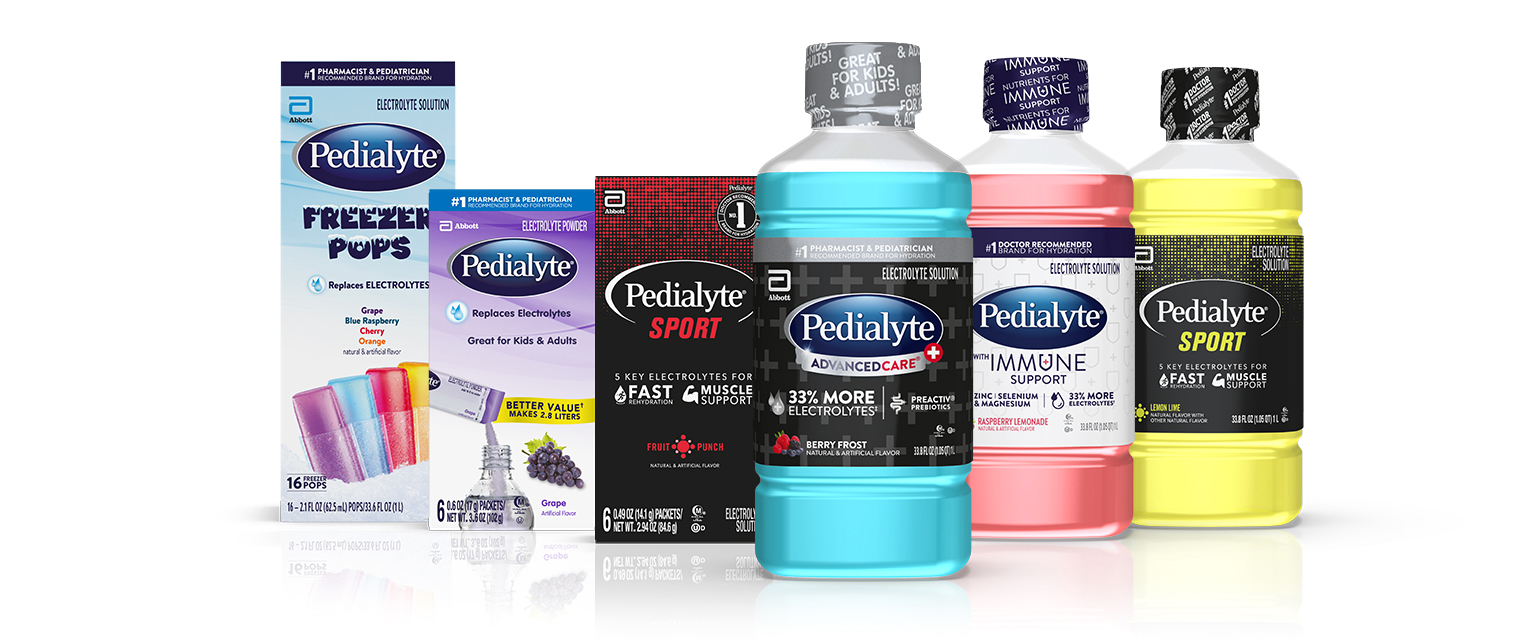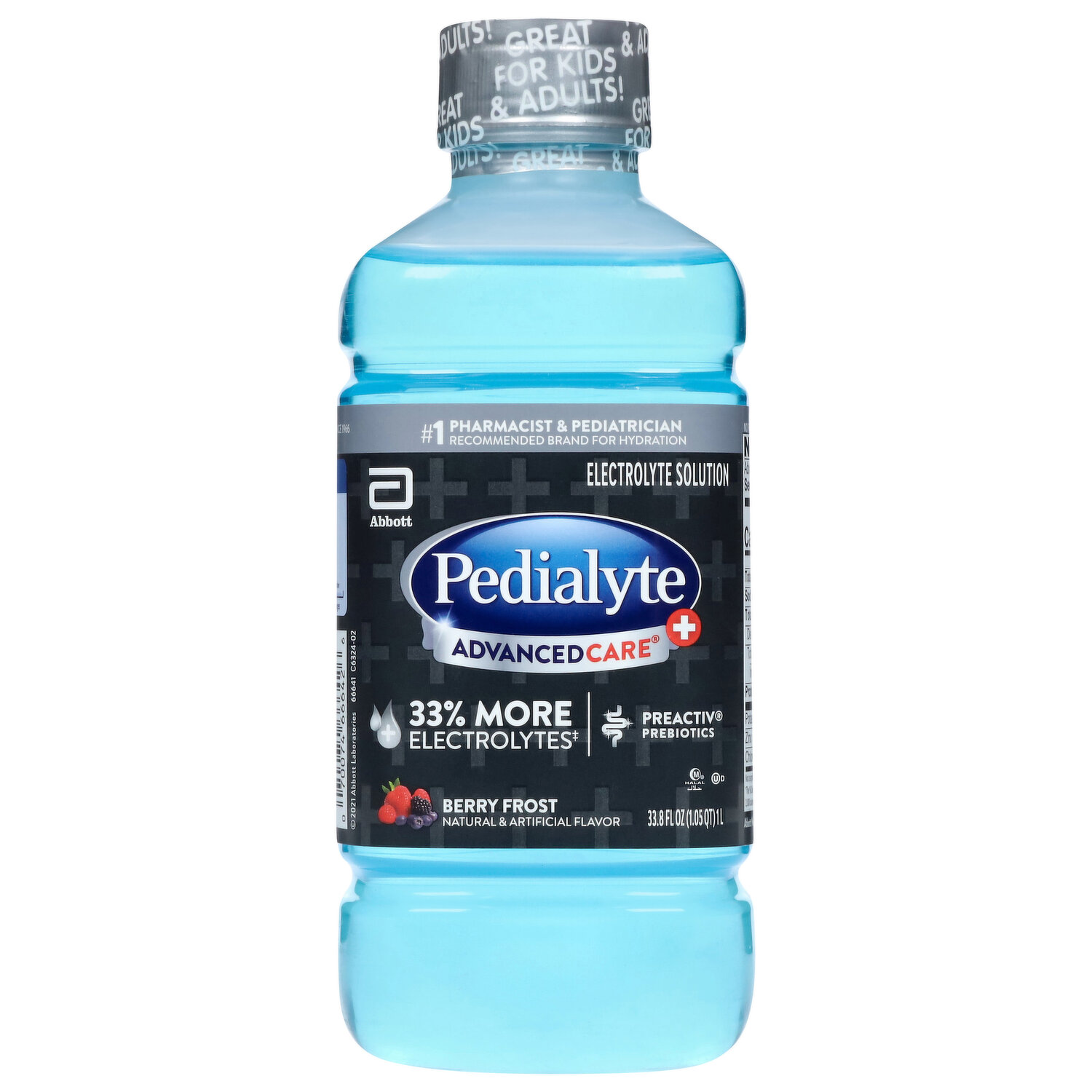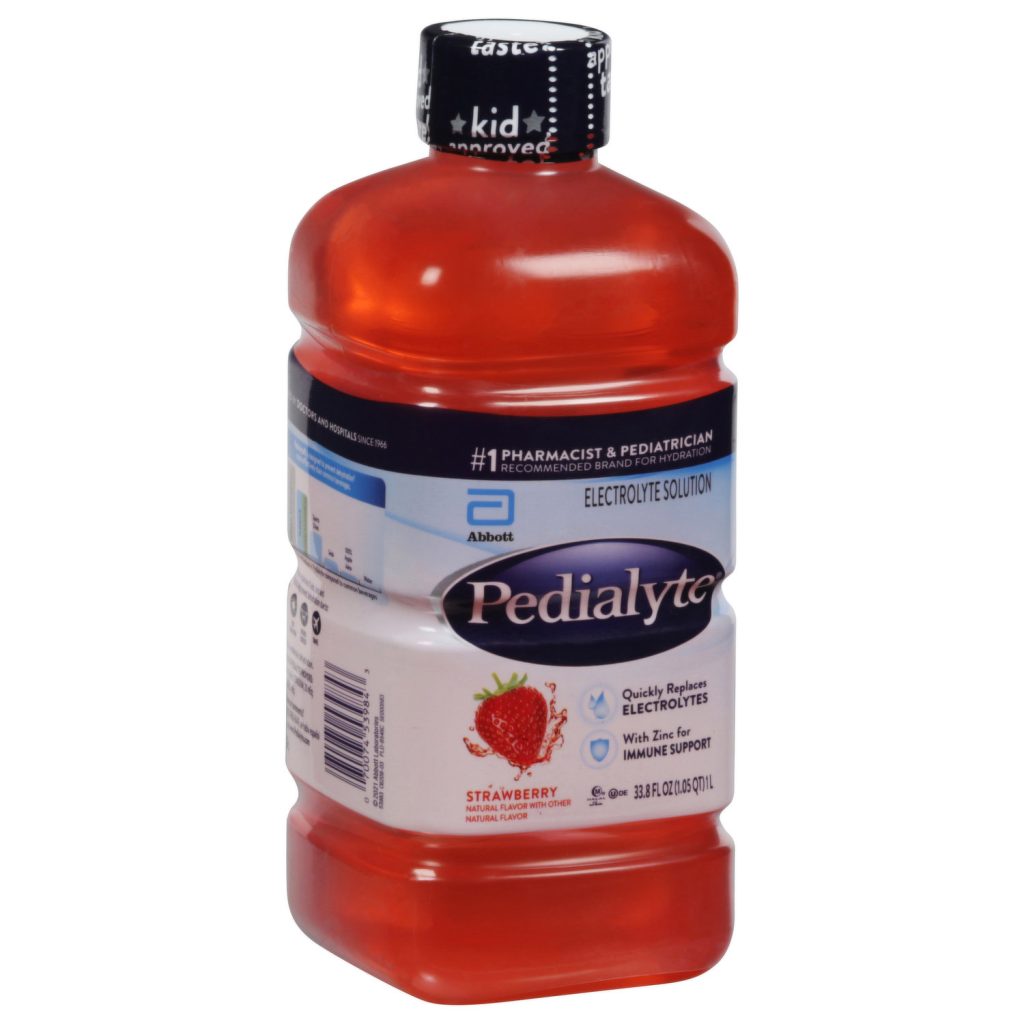Unopened Pedialyte does not need refrigeration. Once opened, you should refrigerate it.
Pedialyte, a popular electrolyte-replenishing beverage, often comes into the conversation during times of dehydration, be it from illness or intense physical activity. Understanding how to store this hydration solution correctly helps maintain its effectiveness. Parents and caregivers particularly value Pedialyte for its ability to quickly rehydrate children.
For consumers and healthcare givers, knowing the proper storage methods ensures the product remains safe and effective until its expiration date. Proper storage not only preserves the taste but also the integrity of the vital minerals and electrolytes that are essential for rehydration. Remember to always check the product label for specific storage instructions to ensure optimal benefits from this hydration aid.

Credit: www.pedialyte.com
The Basics Of Pedialyte
Maintaining hydration is key to healthy living, especially when illness strikes. Pedialyte stands out as a go-to solution for hydration needs. It’s formulated to promote fluid and electrolyte balance in the body, which is crucial when you’re losing more fluids than usual. Let’s dive into what Pedialyte is and why it can be beneficial for both kids and adults.
What Is Pedialyte?What Is Pedialyte?
Pedialyte is an oral rehydration solution (ORS) that restores body fluids and minerals lost during diarrhea, vomiting, or heavy sweating. Doctors often recommend it for children and adults to prevent dehydration, a common issue with illnesses or intense physical activity. Pedialyte comes in various forms, including liquids, powders, and freezer pops. Knowing when to refrigerate Pedialyte depends on the form you have and whether or not you’ve opened it.
Primary Uses and BenefitsPrimary Uses And Benefits
- Combats dehydration: Quickly replaces fluids and electrolytes.
- Multiple flavors: Makes it easier for children and adults to drink.
- Helps during sickness: Useful during stomach flu, food poisoning, or heat exhaustion.
- Supports athletic recovery: Beneficial for athletes needing rapid rehydration.
| Product Type | Before Opening | After Opening |
|---|---|---|
| Bottles | No need to refrigerate | Refrigerate |
| Powders | Store in a cool, dry place | Mix with water and refrigerate if not consumed immediately |
| Freezer Pops | Freeze | Consume immediately after opening |
Storing Pedialyte: The Starting Point
Families often wonder about the right way to store Pedialyte. Proper storage ensures safety and maintains quality. Below, find tips and original instructions for optimal storage at every stage.
Instructions On The Packaging
Always check the package for specific instructions. Manufacturers provide guidelines to guarantee Pedialyte’s effectiveness. Adhering to these ensures the product performs as expected.
- Look for storage recommendations
- Follow opening and use-by guidelines
- Notice temperature requirements
Before Opening: Shelf-stable Considerations
Pedialyte is shelf-stable before opening. Store it in a cool, dry place. Avoid direct sunlight or high temperatures. This maintains its quality until the first use.
| Condition | Shelf Life |
|---|---|
| Unopened | As indicated on the package |
| Stored correctly | Maintains quality |
The Refrigeration Question
The Refrigeration Question often pops up among concerned caregivers and health-conscious individuals. Pedialyte, a popular electrolyte-replenishing drink, occupies shelves in many households. Keeping it fresh and effective is crucial. The way you store Pedialyte might impact its flavor and health benefits.
Assessing The Need For Cooling
Understanding when Pedialyte needs refrigeration starts with looking at the label. Unopened Pedialyte can stay in a cool, dry place. Once you twist that cap open, things change. Every bottle has specific storage instructions. Follow them closely to ensure quality.
Here’s what to remember:
- Unopened Pedialyte remains stable without refrigeration.
- After opening, refrigerate the bottle promptly.
- Use chilled Pedialyte within 48 hours for best results.
How Temperature Affects Pedialyte
Temperature plays a pivotal role in maintaining Pedialyte’s integrity. Electrolyte balance and flavor could suffer in improper conditions.
Here’s a quick look at why temperature matters:
- Warm environments encourage bacterial growth.
- Heat may degrade vital nutrients.
- Cool temperatures preserve freshness and taste.
Keep Pedialyte in environments below 77°F (25°C) before opening. After breaking the seal, the fridge is your friend. Storing your Pedialyte cold ensures a safe, hydrating drink for the whole family.

Credit: www.brookshires.com
After Opening: Maintaining Quality
Welcome to our discussion on ‘After Opening: Maintaining Quality’ for Pedialyte products. Once opened, how you store Pedialyte can impact its quality and efficacy. Let’s explore the necessary steps to ensure that every sip offers the hydration you need.
The Importance Of Refrigeration Post-opening
Opening a bottle of Pedialyte invites airborne contaminants and bacteria. Refrigeration is key to slowing the growth of these microorganisms. Maintaining a cold environment preserves the drink’s sterility and its refreshing taste.
Storing your Pedialyte properly keeps the essential electrolytes stable and ensures that the product stays as effective as possible to aid in hydration and recovery.
Safe Consumption: Time Frames To Consider
Once you open Pedialyte, consuming it within a specific timeframe is crucial.
| Storage Location | Safe Consumption Window |
|---|---|
| Room Temperature | 1 Hour |
| Refrigerator (40°F or below) | 48 Hours |
Follow these guidelines to ensure safety and maximize the benefits of Pedialyte. Under no circumstances should the drink be used beyond these timeframes.
Extended Shelf Life Techniques
Extended Shelf Life Techniques have become a priority for consumers wanting to maintain both the quality and safety of their beverages. Pedialyte, a popular electrolyte solution often used for dehydration, is no exception. Knowing how to store Pedialyte properly can greatly extend its usability and effectiveness. In this section, we will reveal methods to maximize the shelf life of your Pedialyte, ensuring that it’s refreshing and potent when you need it most.
Best Practices For Refrigeration
Storing Pedialyte in the refrigerator is the go-to method for keeping it at peak freshness. Here’s what you need to know:
- Seal the bottle tightly after each use to prevent contamination and spoilage.
- Place at the back of the fridge where temperatures are most consistent.
- Avoid close contact with strongly odored foods to prevent taste alteration.
The table below summarizes ideal refrigeration temperatures and durations:
| Product | Optimal Temperature Range | Post-Opening Shelf Life |
|---|---|---|
| Pedialyte | 35°F to 40°F (2°C to 4°C) | 48 hours |
Alternatives To Refrigeration
If refrigeration is not an option, consider the following techniques:
- Store unopened Pedialyte in a cool, dry place away from direct sunlight.
- Use single-serving Pedialyte packets to avoid the need for refrigeration after opening.
- Employ insulated containers with ice packs to keep Pedialyte cool on the go.
Tip: Keep a dedicated insulated container for Pedialyte to always have a chilled serving ready when you’re outdoors.
Signs Of Spoilage
When it comes to keeping Pedialyte at its best, knowing the signs of spoilage is vital. This rehydration solution, often used for kids and adults, should always be safe to drink. Spotting the bad signs early helps avoid health risks. Let’s dive into the indicators that Pedialyte has gone off.
Visual And Olfactory Indicators
Clear signs tell you Pedialyte is no longer good to drink. Look for these visual clues:
- Color changes
- Cloudiness or murkiness
- Particles floating
- Container swelling
Next, trust your nose. If Pedialyte smells off, it’s time to throw it out. Fresh Pedialyte has a mild, slightly sweet scent. Any sharp, sour, or unpleasant odors are a red flag. Don’t ignore a bad smell.
Risks Of Consuming Spoiled Pedialyte
Drinking spoiled Pedialyte can be risky. Your health is important. Keep these risks in mind:
- Stomach ache or discomfort
- Nausea or vomiting
- Diarrhea
- Food poisoning symptoms
Be particularly careful with babies and children. Their bodies are more sensitive. Always check Pedialyte before giving it to them. When in doubt, throw it out. Safety comes first!
Traveling With Pedialyte
Pedialyte is an essential item for many travelers, particularly those with kids. It helps to prevent dehydration caused by travel-related issues like stomach bugs or heat. For those planning a trip, keeping Pedialyte safe and at the correct temperature becomes a top priority. Here are some clever ways to manage Pedialyte while traveling.
Portable Storage Solutions
Choosing the right portable storage for Pedialyte is crucial. Look for compact, lightweight options:
- Insulated Cooler Bags: Keep Pedialyte chilled for hours.
- Thermal Flasks: An excellent choice for single-servings.
- Travel-friendly Packets: Convenient and space-saving.
Be sure these options fit within your luggage and are easy to carry around. It’s important to consider the duration of your travel and pick a solution that will keep Pedialyte at its best until you reach your destination.
Temperature Management On The Go
Maintaining the right temperature for Pedialyte while traveling ensures its effectiveness. Here’s how you can achieve that:
- Freeze Packs Ahead: Use ice packs to keep Pedialyte cool.
- Avoid Direct Sunlight: Store your Pedialyte in shaded spots.
- Monitor Temperature: Use a thermometer to check the storage temperature.
If Pedialyte is exposed to high temperatures, its quality may decline. Ensure you take steps to preserve its temperature, especially during long trips or in warmer climates. This will prevent spoilage and ensure Pedialyte’s effectiveness when you need it most.
Pedialyte Varieties
Parents and caregivers often rely on Pedialyte to keep children hydrated during bouts of illness. Yet, with various Pedialyte formulations on the market, it’s crucial to understand their specific storage instructions to maintain effectiveness.
Different Formulations, Different Rules
Not all Pedialyte products are created equal. Different types demand unique storage conditions. It’s important to know these to ensure the liquid retains its hydrating qualities. From bottles to powder packets, the formulation affects how you should store Pedialyte.
- Ready-to-drink bottles may require refrigeration after opening.
- Powder packets are perfect for on-the-go as they don’t need to be kept cold.
- Freezer pops obviously need freezing, but have storage rules post-thawing.
Comparison Of Storage Needs
Each Pedialyte variety has specific storage guidelines. Understanding these ensures your product remains effective up to its expiration date.
| Product Type | Before Opening | After Opening |
|---|---|---|
| Bottles | Store at room temperature | Refrigerate & use within 48 hours |
| Powder Packets | Keep in a cool, dry place | Mix with water & use immediately |
| Freezer Pops | Keep in freezer | Consume immediately after thawing |
Check labels for precise instructions. Remember, a stored Pedialyte correctly means its full hydration benefits remain intact.

Credit: pedialyte.ca
Frequently Asked Questions On Does Pedialyte Need To Be Refrigerated
Is Refrigeration Required For Pedialyte After Opening?
Once opened, Pedialyte should be refrigerated to ensure its safety and efficacy. Drink it within 48 hours for best results. If not refrigerated, its potency may diminish.
Can Pedialyte Be Stored At Room Temperature?
Unopened Pedialyte can be stored at room temperature. Keep it in a cool, dry place away from direct sunlight. After breaking the seal, refrigerate it.
How Long Does Pedialyte Last Once Opened?
Opened Pedialyte stays good for up to 48 hours if refrigerated. After that, its beneficial properties may decline, and it should be discarded for safety reasons.
What Are The Signs Of Spoiled Pedialyte?
Spoiled Pedialyte may have a strange odor, change in color, or the presence of mold. If you notice any of these signs, do not consume the product.
Conclusion
Wrapping up our discussion, the need for refrigerating Pedialyte hinges on prolonging its freshness and ensuring optimal taste. Once opened, chilling it is essential for maintaining its efficacy. Remember to check the label for storage specifics. Storing Pedialyte properly ensures your hydration remedy remains effective and palatable when you need it most.

